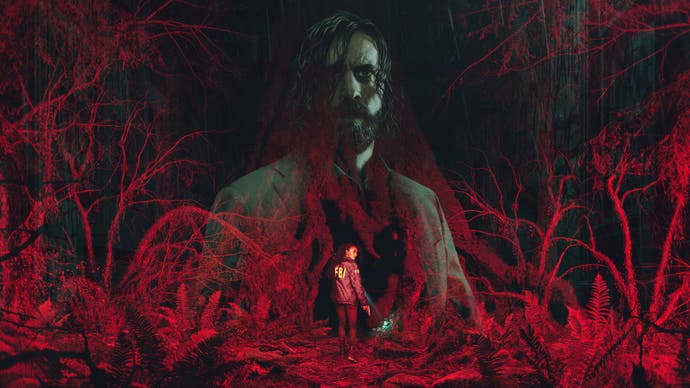Alan Wake 2 is putting story above all
Talking horror, style, and inspiration, with creator Sam Lake and director Kyle Rowley.
For all its emphasis on nightmarish mystery and confounding dream logic, Alan Wake 2 sounds frightfully coherent. Like a lot of media that high-budget games often seek to embody, Alan Wake 2's development seems to have been focused from top to bottom on its story - or at least that's how it's sounded, from my recent conversation with creative director Sam Lake and game director Kyle Rowley, plus an extended demo of it in action behind closed doors.
As you've probably already heard, Alan Wake 2 will be a survival horror game, rather than the action game that was the series' original, and the team at Remedy had quite specific reasons for it. Part of that is a response to the original Alan Wake's reception - there was some "dissonance," as Rowley put it to me, in the amount of combat Alan Wake featured considering its apparent focus on narrative - but it's also just a better fit for the story of Alan Wake 2 itself.
"Horror gives us a slower tempo," Lake said. "Less combat, through the whole experience, meaning that we can spend time on building it up. And then the actual combat is a bigger event, which means we can add strategic elements, resource management into it, and make it really intense." And then because there are fewer encounters, he continued, that means you're able to have a wider variety of enemies and boss fights as well.
"It's a narrative driven game as well," Rowley added. "We like to tell stories, Alan Wake 1 was very narrative driven, and making the game slower paced, which survival horror generally is, with more exploration and more puzzle-solving, we can build - as you saw in the demo - more mechanics in the game that allow us the tell the story as well."
In the demo that played out in a few ways. We spent the entirety of our time with FBI Agent Saga Anderson, the series' new co-protagonist, who explores the forests of the pacific northwest with her fellow agent in search of a mysterious foe: a dead man named Nightingale, who's come back to life. There were a range of mechanics - deduction, via Saga's "mind place", a kind of metaphorical, pins-on-the-wall conspiracy cabin, where you literally piece together your gathered clues by pinning things on a classic conspiracy corkboard or rearranging photos and scribbled ideas - or puzzle-solving through finding switches for generators or collecting items of note from the environment. Rowley, in designer mode, describes this as giving the player "more verbs to do interesting things in the game."

Much of that environment is, naturally, rather spooky but Alan Wake 2 seems to play more on expectation than actual scares themselves - Lake emphasises this is a "psychological horror story" first. The wind howls and trees rustle, a figure darts behind a cabin. A witch's hut sits unnervingly vacant - and dark. With combat, it's a combination of using your torch's light - a returning theme from the first Alan Wake - and scarce bullets for your FBI pistol or, as we found, a discovered shotgun and handful of cartridges.
Rowley, channelling Super Hans, emphasises the studio's desire to build a powerful "sense of dread," with your own anticipation of what's to come often building to something "more impactful than the event itself." Meanwhile Light, when focused on an enemy from your torch, bursts a kind of wound in them to act as a weak spot - but also acts as shelter, such as under a few handy god rays shining through in one spot. Standing in it, enemies can no longer see you, loitering nearby while you gather yourself for a return to the fight, and again returning to a sense of rhythm, tension and anticipation over pure "gore and jumpscares" themselves.
While all this goes on, a separate timeline is playing out. Alan Wake 2 will have two concurrent timelines for you to play through, the Pacific Northwest with FBI agent Saga Anderson, and the Dark Place with Alan Wake. These can't be switched between at whim, like in say GTA 5. The opportunity comes up in specific places called Break Rooms (where the coffee thermos makes a return as a save function) but, if you like, you can continue all the way to the end of one path before switching to try out the other.
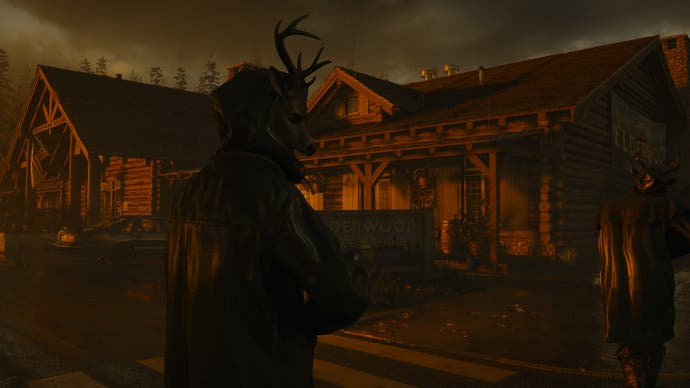
The idea of having two characters has been in Remedy's mind for "a while," Lake told us. "Being aware that we want every game to be at the same time a world of their own, and approachable such that it's not like, 'well, to play Alan Wake 2 you need to have played the first Alan Wake, and the DLC, and American Nightmare, and Control and Control's DLC' - like that would just be crazy. So it needs to be approachable on its own. That was one part of bringing a new character who is a newcomer to this world, who will experience it as she learns about it."
"But also," he explained, it was part of the team's goal to be "really ambitious about interactive storytelling, and from that came this structure for this game. The idea that we have these two narrative threads side by side with two characters as playable characters, and in two worlds. And then we are giving the freedom to hop between them for the player as they choose how to proceed. All of these ideas require this kind of duality, as part of it."
From the raw mechanic perspective, the break rooms have been placed where "it makes sense, we think, from a pacing perspective to allow the player to potentially switch," Rowley said. When you come back from the other character you'll be in "exactly the same place, time hasn't passed - it's kind of on a meta level of like, switching on the player side."

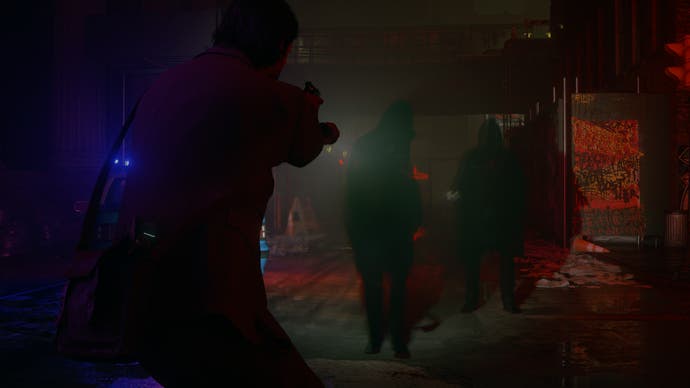
"We were quite aware that we don't want to allow players to break their own experience by doing stuff that would completely affect everything, but the stories have been written in a way that you can consume the story in any order. There's no wrong way to play it, basically."
Lake confirmed to us that nothing will be "missable" by, say, sticking with one path all the way through to its conclusion, or making certain choices along the way. "The idea is, to play this game through, you will have played through both sides. It's just in which order - so, even if you decide, 'I want to be in the Pacific Northwest, I want to stick with Saga', after introducing the idea of playing Alan Wake in the Dark Place you can just keep on playing Saga almost to the end," Lake explained, "and only then hop back and experience the Dark Place side of it to the end, for the kind of climax and combination. Or the other way round. But you will eventually then come back and experience the other side as well."
"We do have optional content in the game that's not on the critical path. It's completely optional, but it's not related to the character switching," Rowley added, building on something we saw in the demo, where there were multiple (literal) branching paths through the forest at several moments, as well as multiple dialogue choices through your conversations as Agent Anderson.
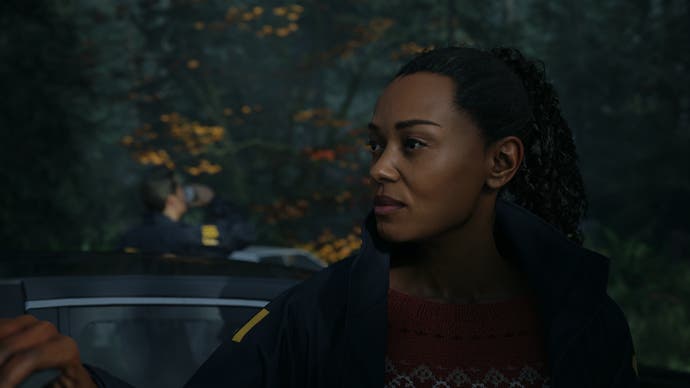
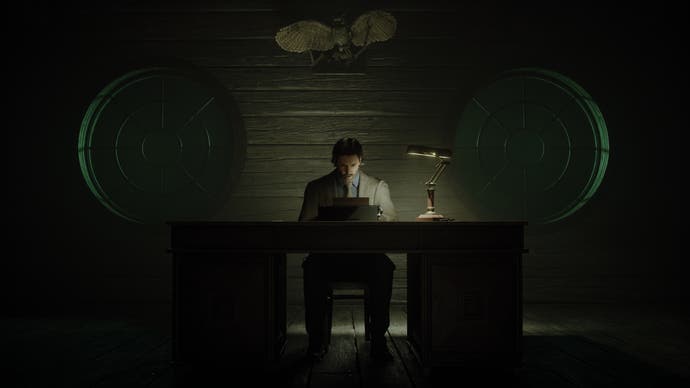
All of this has a kind of "dreamlike element," Lake said. "The stories do echo each other and the characters do see visions of each other along the way. And there are certain events that mirror each other. But when it comes to twists and cliffhangers, they are contain on their own narrative tracks - we don't do it like, 'Oh, now she's in trouble and the horrible cliffhanger and… we switch to playing him!'"
"It's not built like that, intentionally, to allow this idea that you can, maybe, see this vision from the other side at this point, and you don't quite understand what it means or you get a certain impression based on where you are, and then you play the other side and things click into place. But if you play through it, it gives you a different perspective and understanding on it. We are hoping that for the players wanting to experience it and consume it on a narrative level, they will be interested actually in then going back and playing again in a different order - so you maybe even have certain things click into place that they didn't even notice on the first one."
That notion of not fully understanding what's going on, building certain impressions of things and gradually piecing them together, has been a theme with Remedy's work for a while, and comes back to the studio's horror influences. For a while Remedy's main - or at least most obvious - influences have been Stephen King and David Lynch, what with the mix of horror with meta ideas like a writer being impacted by their own story, and Lynch's mix of mirror worlds, FBI agents and suspended meaning. Lake also had a nice story to tell about how that Stephen King quote came to be in the first Alan Wake.
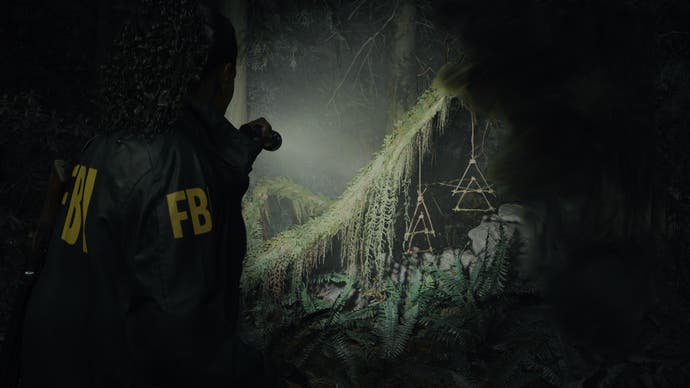
Now, Lake says, more modern takes on horror have informed the studio's work with Alan Wake 2. "It definitely feels like horror is more popular, and there is new, great horror coming, across different mediums - it used to be a niche thing, now it's clearly embraced by a wider audience," he said. That was definitely part of the studio's reasoning for focusing more on making a true psychological horror game, Lake said, and also something he described as being "very liberating, on that front, to know that we don't need to hold back, that we can be very honest to the story and go as far into horror as it feels the story needs."
"Style-wise," he said, the studio was "looking at modern and classic art-house horror films, like more recent stuff like Hereditary or Midsommar, or other things like this - this idea of stylising it and leaning more on atmosphere and dread than, you know, gore or jumpscares. We've always drawn inspiration, with the original Alan Wake, from Twin Peaks and David Lynch's works - that's still there, obviously, but [we're] just kind of widening our inspirations for this one."
"Those horror movies as well, in particular, they're interesting from a horror perspective because they're not - they're more 'horror stories' themselves," Rowley added. "It's more about the drama, and the characters and the stuff that they go through, and their relationships and how they change over the course of that story, rather than the–"
"Than the spectacle," Lake said.
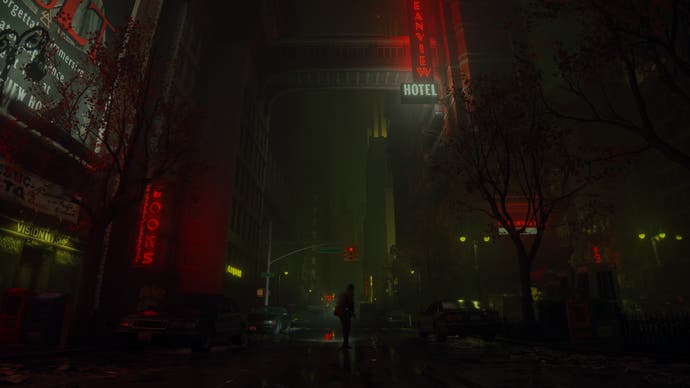
"Exactly. I think that because we're making a narrative driven experience, we are focusing on a second-to-second horror, the atmosphere and how we build tension. But it's the overarching narrative as well, that's important from a horror perspective, and the journey those characters go through. I think modern horrors - they do that very well."
That said, modern horror movies in particular - films like Get Out, or Nope, or Midsommar - have also shifted to making subtle, or sometimes even more overt points as a kind of social commentary, something which works for them, but buts up against the typical Lynchian response of screwing up your nose and saying "No!" when asked to explain the meaning of your work. Alan Wake 2 won't be going that far, Lake said - "I'm not sure if it's about making a point" - and from our time with the demo those influences feel more stylistic than narrative.
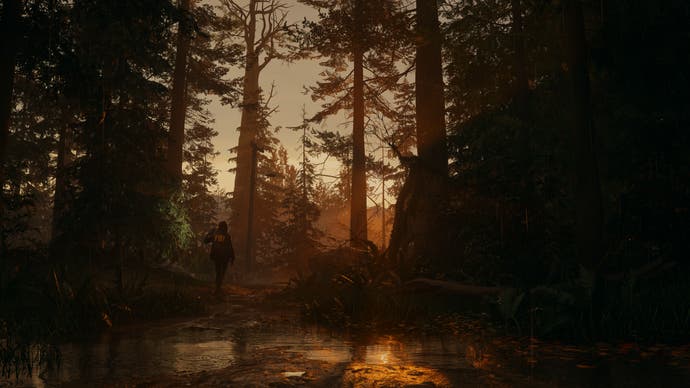
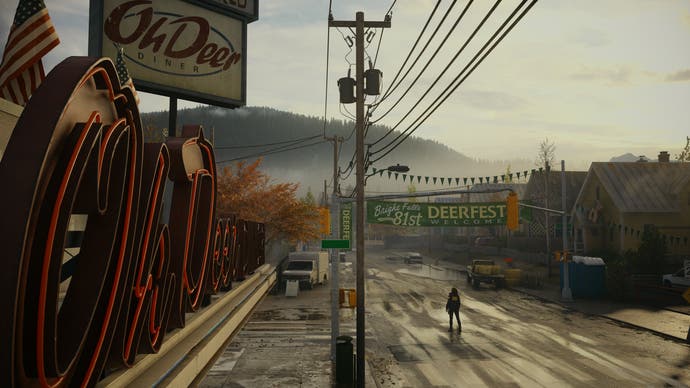
Lynch's influence is also still very strong, just as Lake told us. The entire notion of a "Dark Place" for one - but there are also White Lodge elements too, of a kind of half-way house in between. As Anderson gradually pieced together the clues of Nightingale's resurrection and whereabouts in the demo, we found our way to an overgrown tree with split roots above ground. With the right solution found, we were able to enter into it and cross over into a place called the Overlap. Enter: looping, recursive paths that cross back over themselves, flashes of another parallel world on top of our own, deeply stylish, haunting use of green and red light. And a tense boss-fight, based on dodging attacks and landing a few occasional shotgun blasts, where Anderson flicked between hunter and hunted amongst mazing overgrowth.
The magic of it all is how so much of Alan Wake 2's style and design works in symphony with the story Remedy is trying to tell. The studio's done this before of course, with Control a particular kind of East London creative director's dream, what with its brutalism and mid-century typewriters and big, beautiful fonts. Where that game snagged was its combat, and with that tweaked significantly for Alan Wake 2, particularly with the move to survival horror and its combination with Remedy's signature surrealism and tone, this feels like the rare case of a major tentpole video game with every element of its design working together towards a narrative goal - all of its brush strokes moving in the same direction.
It's best summarised by Rowley's description of how the studio came to that survival horror decision in the first place. It was an early one, he said, accompanied by a realisation: "Oh shit, yeah - why didn't we do this before?!"
